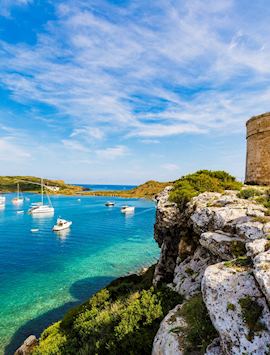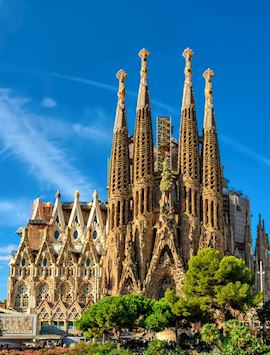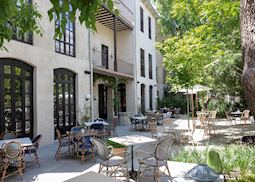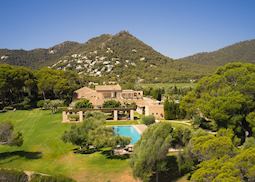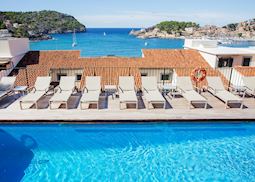Jump to:
With its labyrinthine alleyways linking honey stone buildings and sun-splashed squares, Palma is a place to lose yourself in. Mallorca’s capital city sits away from the island’s busier regions, on the southwest coast. And, from Almudaina Palace — an Islamic fort converted into a royal residence — to Plaça de Cort, a square with a 600-year-old olive tree, it’s a place steeped in history.
The city’s best-known landmark is the striking Palma Cathedral, which dates back to the 14th century and includes decorative ironwork and stained glass, plus ceramic tiles designed by Antoni Gaudí. A Gothic construction of golden sandstone, its kaleidoscopic rose window is one of the largest in Europe. Palma’s artistic side spills beyond the walls of the cathedral, with several galleries nestled among the bars, restaurants, and cafés. You can discover the city’s historic, artistic, and culinary sides through our private walking tours, wine tastings, and artisan workshops with local craftspeople.
Things to see & do in Palma
Palma’s historic highlights
A private walking tour is one of the best ways to discover the real Palma. You’ll take in sights like the Almudaina Palace and Plaça de Cort, while your guide tells you more about their history and cultural significance. The tour also includes more unassuming spots, such as the Convent de Santa Clara. Here, you can buy handmade baked goods from the resident nuns, the Clarisas, via a special torno (turnstile) that means you never see their faces. And, of course, you’ll visit the Cathedral, or La Seu as it’s called in Catalan, to take in its Gothic architecture, stained-glass windows, and unbroken Mediterranean views from the roof terraces.
Artisan crafts
From glassblowing to pottery — not to mention masterpieces by renowned painters like Miró and Picasso on show in city museums — Palma has a rich artistic tradition. You’ll find many galleries dotting its narrow streets, and a wide variety of craftspeople within its walls. For a hands-on introduction, we can arrange for you to attend a workshop, led by a local artisan, where you’ll make your own pair of leather sandals to take home. You’ll choose the design before being taken through the process from start to finish.
Exploring Palma’s culinary side
Palma’s gastronomic scene has grown exponentially in recent years, resulting in a wealth of restaurants to choose from. If you’d like to get to know the local cuisine, you can join a cooking class run by a culinary expert. Here, you’ll learn the art of cooking paella, along with a selection of other Spanish recipes, before enjoying your dishes paired with local beer or wine. Mallorca is also home to a number of boutique vineyards. You can find out more about the island’s wines and sample a selection of them at a local bodega (wine shop), under the tutelage of a connoisseur.
Best time to visit Palma
With its pleasant Mediterranean climate, Palma is a year-round destination for the most part. We recommend visiting between April and June, or in September and October, when the weather is comfortable and the island more peaceful. It’s best to avoid July and August, as the summer months see larger crowds and hotter temperatures. Some hotels close from Christmas until the end of January.
who's been there
-
617-223-4521617-223-4767
- Make an inquiry
Suggested itineraries featuring Palma
Our itineraries will give you suggestions for what is possible when you travel in Palma, and they showcase routes we know work particularly well. Treat them as inspiration, because your trip will be created uniquely by one of our specialists.
Places near Palma
- Mallorca less than 5 miles away
- The Balearic Islands 20 miles away
- Menorca 80 miles away
- Ibiza 80 miles away
- Barcelona 128 miles away
- Cava wine region 134 miles away
- Montserrat 147 miles away
- Catalonia 152 miles away
- Girona 167 miles away
Photos of Palma
Accommodation choices for Palma
We've selected a range of accommodation options for when you visit Palma. Our choices usually come recommended for their character, facilities and service or location. Our specialists always aim to suggest properties that match your preferences.
-
![Can Bordoy Grand House & Garden, Palma]()
-
![Exterior, Can Simoneta]()
Can Simoneta
Palma -
![Hotel Esplendido, Sóller]()
Hotel Esplendido
Palma


